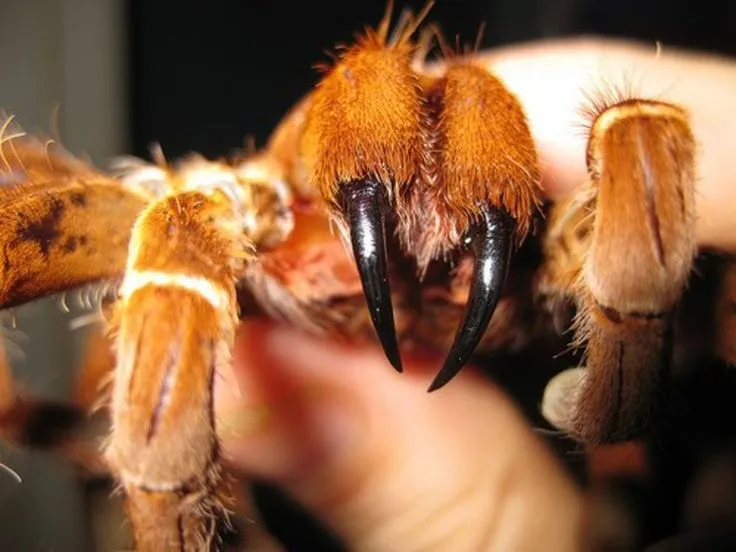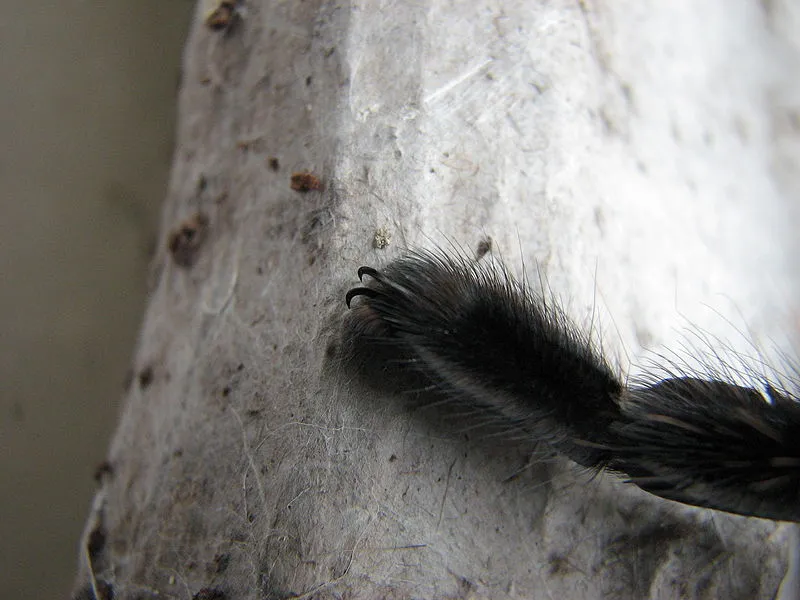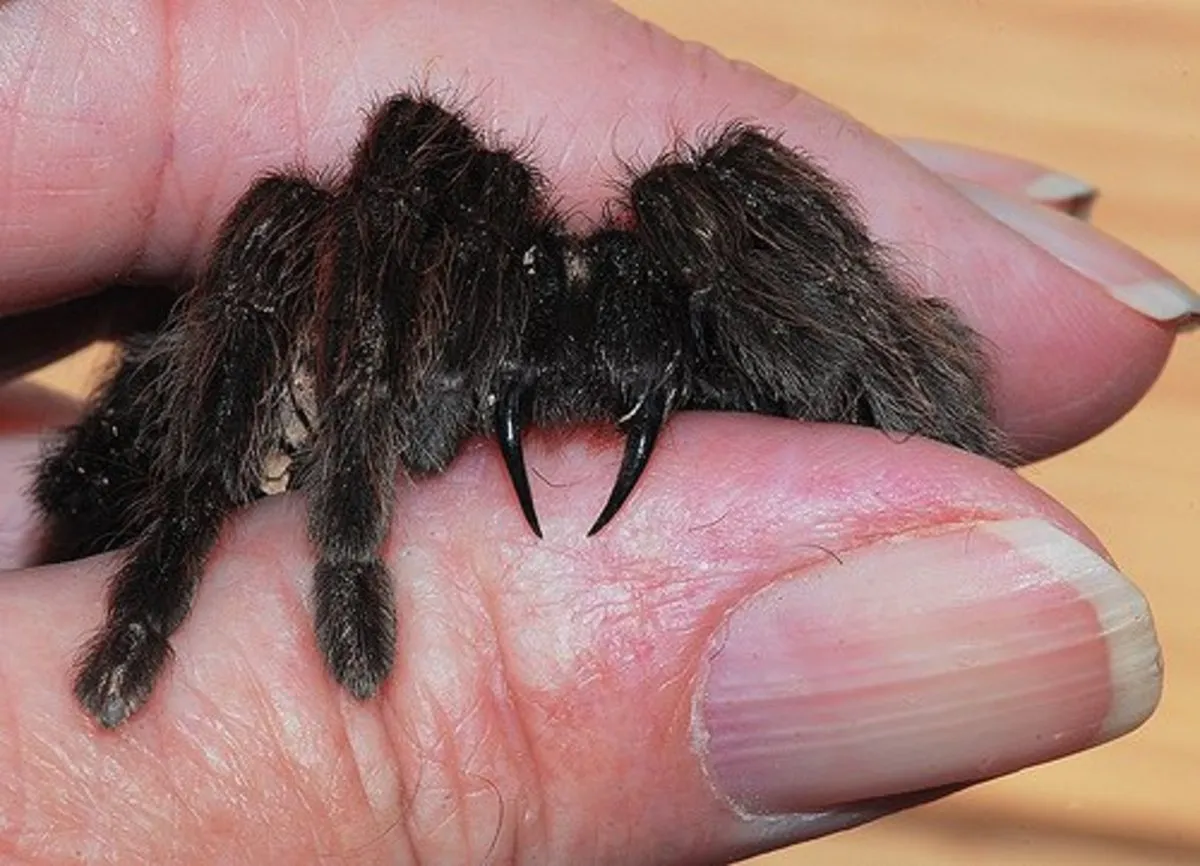Tarantulas, with their imposing size and hairy bodies, are fascinating creatures. However, the thought of a tarantula bite can be quite unsettling. While these spiders are venomous, their bites are rarely life-threatening to humans. Understanding what happens after a tarantula bite and how to treat it is crucial for anyone who encounters these arachnids, whether as a pet owner or in their natural habitat. This article delves into the symptoms, first aid measures, and preventative steps you can take to minimize the risks associated with tarantula bites.
What Happens After a Tarantula Bite
When a tarantula bites, it injects venom into the skin. The severity of the reaction varies depending on the species of tarantula, the amount of venom injected, and the individual’s sensitivity. In most cases, the effects are localized, but systemic reactions can occur. The bite itself might feel like a sharp pinch, similar to a bee sting. The initial pain can be followed by other symptoms, ranging from mild discomfort to more severe reactions. It is important to note that tarantula bites are often dry bites, meaning that no venom is injected. However, it is best to treat all bites with caution.
Symptoms of a Tarantula Bite
The symptoms of a tarantula bite can manifest in several ways, both at the site of the bite and throughout the body. Recognizing these symptoms is essential for proper treatment and care. Most reactions are localized and resolve relatively quickly, but it’s vital to monitor for more severe signs that may require medical attention. Observing the progression of symptoms helps determine the necessary course of action and ensures the individual’s well-being after the bite.
Local Reactions

Local reactions are the most common responses to a tarantula bite. These typically occur at the site of the bite and may include immediate pain, burning, itching, and redness. Swelling and localized muscle cramps can also develop around the area. The intensity of these symptoms can vary widely, from mild discomfort to more significant pain that could last a few hours to a few days. The specific characteristics of the local reaction provide clues to the bite’s severity and guide the initial treatment steps.
Systemic Reactions
Systemic reactions, although less common, involve symptoms that affect the entire body. These could include nausea, vomiting, dizziness, headache, and in rare cases, more severe reactions such as difficulty breathing or allergic reactions. The presence of systemic symptoms warrants immediate medical attention. Systemic reactions indicate a more significant response to the venom and require prompt intervention to prevent complications. Always seek medical advice if you experience such reactions after a tarantula bite.
First Aid for Tarantula Bites
Immediate first aid can significantly influence the outcome of a tarantula bite. Knowing the appropriate steps to take can help minimize pain, prevent complications, and reassure the individual. Following the correct procedures can make a significant difference in managing the bite effectively until medical assistance becomes available. The key lies in swift action and calm execution of these essential first aid measures.
Immediate Steps

The first step is to remain calm and move away from the spider to avoid further bites. Gently wash the bite area with soap and water. This helps to clean the wound and reduce the risk of infection. If possible, elevate the affected limb to reduce swelling. Apply a cold compress to the bite site to help reduce pain and swelling. Monitor the person closely for any signs of a severe reaction, such as difficulty breathing or severe swelling.
Cleaning the Wound
After washing the bite area, it’s important to clean it thoroughly. Use mild soap and water to gently wash the wound, ensuring all dirt and debris are removed. Avoid harsh chemicals or irritating substances. Pat the area dry with a clean cloth. This step helps prevent secondary infections and promotes quicker healing. Keeping the wound clean and covered will prevent the possibility of bacterial development.
Pain Management
For pain management, over-the-counter pain relievers such as ibuprofen or acetaminophen can be used. Follow the dosage instructions on the label carefully. Applying a cold compress to the bite site can also help reduce pain and swelling. Avoid scratching the bite area, as this can increase the risk of infection and worsen symptoms. If pain persists or worsens, consult a healthcare professional.
When to Seek Medical Attention

While most tarantula bites are not life-threatening, certain symptoms warrant immediate medical attention. Knowing when to seek professional help is critical to ensure the individual receives the appropriate care. It’s always better to err on the side of caution. Prompt medical intervention can prevent severe complications and provide the necessary treatments.
Severe Symptoms
Seek immediate medical attention if the individual experiences difficulty breathing, severe swelling, or any signs of an allergic reaction. Other severe symptoms may include chest pain, muscle cramps, and significant changes in heart rate. These symptoms could indicate a serious systemic reaction that requires immediate medical intervention. Do not hesitate to call emergency services or go to the nearest emergency room if you notice any of these signs.
Allergic Reactions
Allergic reactions can be serious and can develop rapidly after a tarantula bite. Symptoms of an allergic reaction include hives, itching, swelling of the face or throat, and difficulty breathing. If any of these symptoms are present, seek immediate medical attention. Anaphylaxis, a severe allergic reaction, can be life-threatening and requires prompt treatment with epinephrine (if available) and other supportive measures.
Medical Treatments

Medical professionals have various treatments available to manage tarantula bites effectively. These treatments focus on relieving symptoms and addressing any complications. The approach to treatment will depend on the severity of the bite and the individual’s response.
Antivenom Availability
Antivenom for tarantula bites is not commonly available. The use of antivenom is typically reserved for bites from more venomous spiders. In the case of tarantula bites, the focus is on supportive care, such as pain management and addressing any systemic symptoms. Healthcare providers will manage the situation based on the severity and the specific reactions of the patient. If you believe you may have been bitten by a venomous spider, the medical staff will take the required steps to address the issue.
Medications and Support
Medical treatments often include pain relievers, antihistamines to reduce itching and swelling, and, in severe cases, corticosteroids to manage inflammation. Doctors may also administer intravenous fluids to support blood pressure and treat dehydration. Supportive care plays a key role. Monitoring vital signs and providing comfort are essential. The goal is to manage symptoms effectively and support the body’s natural healing processes.
Preventing Tarantula Bites

Preventing tarantula bites is the best way to avoid the discomfort and potential complications. This involves understanding how to handle these spiders safely and creating a safe environment. Being proactive and following appropriate safety measures greatly reduces the risk of unwanted encounters and bites.
Handling Tarantulas Safely
If you own a tarantula as a pet, always handle it with extreme care. Avoid handling your tarantula unless necessary. If you must handle it, do so in a controlled environment, such as over a soft surface to minimize the risk of injury if the spider falls. Use proper handling techniques, such as gently scooping the tarantula up with a large, soft brush or a container. Wash your hands before and after handling your tarantula and be aware of the spider’s behavior.
Creating a Safe Environment
When in areas where tarantulas might be present, such as outdoor environments or areas where tarantulas are known to live, wear appropriate protective gear. This may include long sleeves, long pants, and closed-toe shoes. Be cautious when reaching into dark or secluded areas where tarantulas might be hiding. Regularly inspect your home for potential entry points and seal any cracks or openings. Keeping a clean and tidy environment can help minimize the chances of tarantulas being attracted to your home.
In conclusion, while tarantula bites are typically not life-threatening, it’s important to understand the potential risks and know how to respond appropriately. Recognizing the symptoms, applying the correct first aid, and seeking medical attention when necessary can ensure a positive outcome. By taking preventative measures, such as handling tarantulas safely and creating a safe environment, you can significantly reduce your risk of encountering these spiders and experiencing a bite. Being informed and prepared is the best approach to dealing with tarantula bites.
